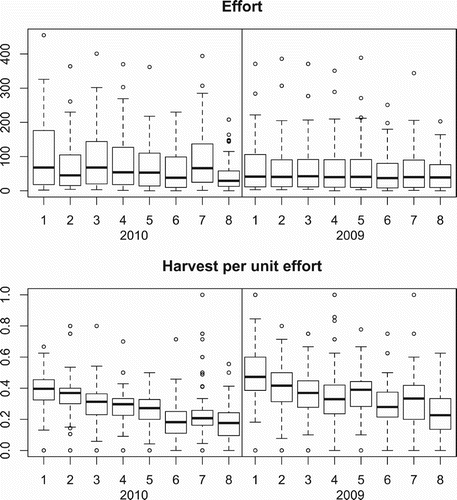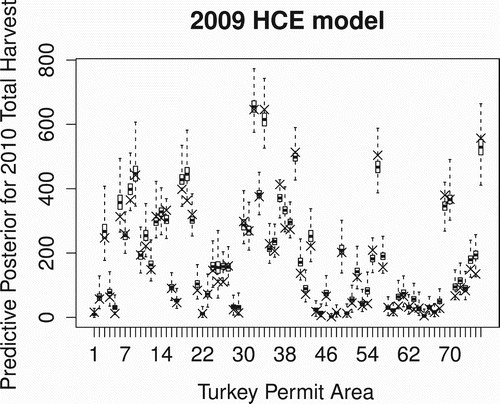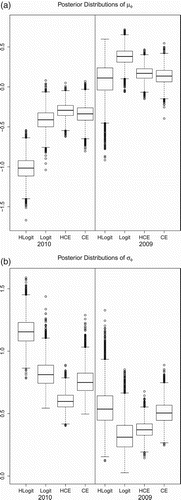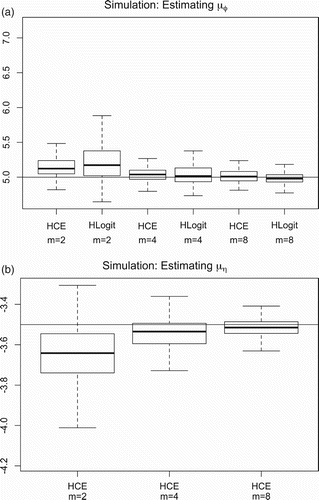Figures & data
Figure 1. Probability of removal during one removal period for (a) the CE specification for θ
i
of 0.1, 0.05, 0.01, and 0.001 and (b) the logistic specification p
ij
=1/[1+exp(−α0, i
−α1, i
g
ij
)] with α0, i
=−4.6 and α1, i
of 0.1, 0.05, 0.01, and 0.001.
![Figure 1. Probability of removal during one removal period for (a) the CE specification for θ i of 0.1, 0.05, 0.01, and 0.001 and (b) the logistic specification p ij =1/[1+exp(−α0, i −α1, i g ij )] with α0, i =−4.6 and α1, i of 0.1, 0.05, 0.01, and 0.001.](/cms/asset/b21cbb41-c3e8-402d-9e89-7cb8e0127a1f/cjas_a_748016_o_f0001g.gif)
Figure 2. Effort, measured by number of hunting permits issued, and harvest per unit effort for the eight hunting periods (1 through 8) in 2009 and 2010.

Table 1. Model comparison using DIC (with average deviance ¯Dev and the effective number of parameters p d ) and using the estimated posterior predictive loss criterion with k=1 and k=9.
Figure 3. p-Values for individual TPA-level GOF tests (T 3) for 2009 (a) and 2010 (b). TPAs with GOF p-values [pcirc] 3 between 1% and 5% are shaded medium gray, while TPAs with p-values below 1% are shaded in dark gray. Regions with no significant lack-of-fit at the 5% level are shaded light gray.
![Figure 3. p-Values for individual TPA-level GOF tests (T 3) for 2009 (a) and 2010 (b). TPAs with GOF p-values [pcirc] 3 between 1% and 5% are shaded medium gray, while TPAs with p-values below 1% are shaded in dark gray. Regions with no significant lack-of-fit at the 5% level are shaded light gray.](/cms/asset/011e4969-2d45-4bb0-ace0-8e3406a073e5/cjas_a_748016_o_f0003g.jpg)
Table 2. Estimates of the metapopulation parameters for abundance and removal probability in the HCE and logit (HLogit) models.
Figure 5. Each boxplot displays the TPA-level predictive posterior distribution for the total harvest predicted from the 2009 HLogit model using the hunter counts from 2010. Each×denotes the actual 2010 total harvest.

Figure 6. Each boxplot displays the TPA-level predictive posterior distribution for the total harvest predicted from the 2009 HCE model using the hunter counts from 2010. Each×denotes the actual 2010 total harvest.


